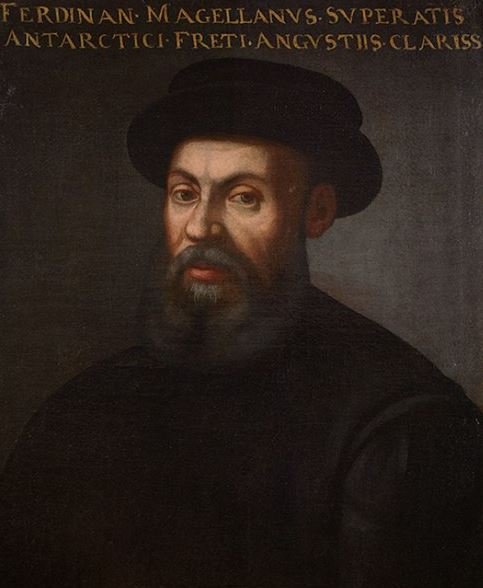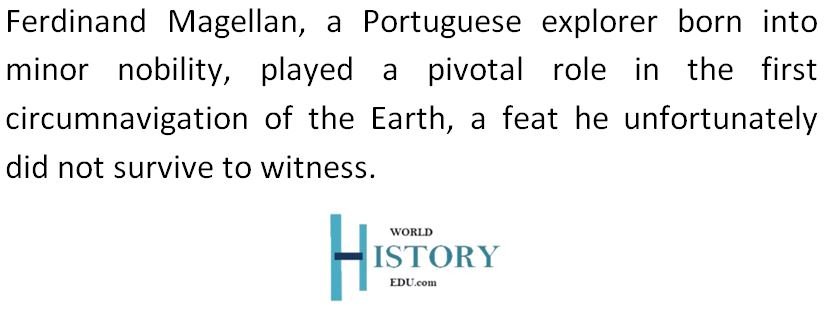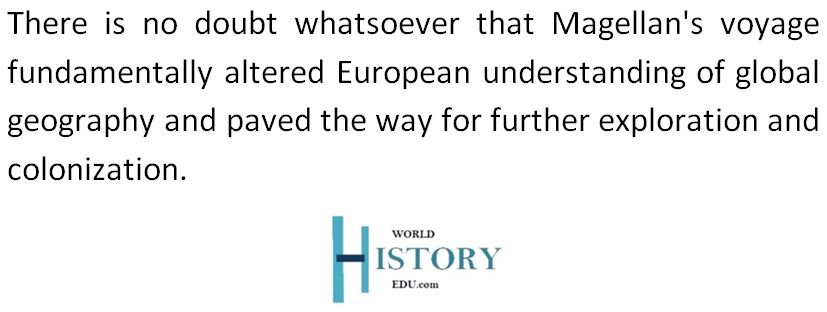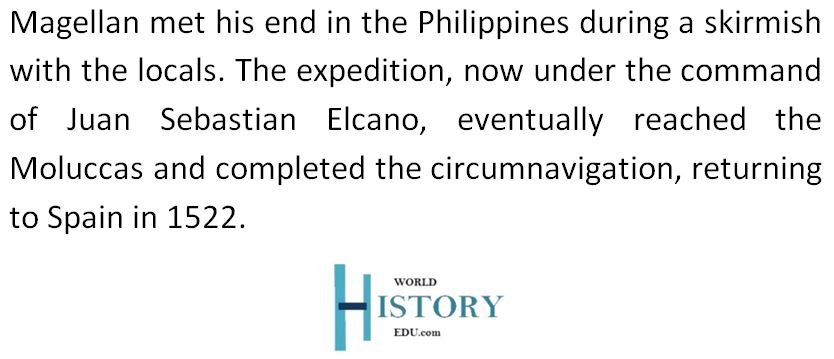Ferdinand Magellan: Life & Major Accomplishments
Ferdinand Magellan (Fernão de Magalhães in Portuguese, Fernando de Magallanes in Spanish) was a Portuguese explorer who led the first expedition to circumnavigate the globe, proving that the Earth is round and that the oceans are interconnected.
Born around 1480 in Sabrosa, Portugal, Magellan’s life and career were marked by his quest to find a westward route to the Spice Islands (the Maluku Islands in modern Indonesia), which were famed for their valuable spices like cloves and nutmeg.
Here are some key aspects of Magellan’s life and contributions:
Early Life and Career
Magellan came from a family of minor Portuguese nobility and served as a page at the court of Portugal. He gained early maritime experience participating in expeditions to India and Africa, learning about navigation and the sea routes critical to Portugal’s burgeoning empire.
Switching Allegiances
After being denied support by the Portuguese king for his plan to reach the Spice Islands by sailing westward, Magellan renounced his Portuguese citizenship and offered his services to Spain. King Charles I of Spain (later Holy Roman Emperor Charles V) approved Magellan’s ambitious plan, hoping to find a new route to the Spice Islands that would give Spain a competitive edge over Portugal.

Ferdinand Magellan is remembered as one of the greatest navigators in history. His expedition had a profound impact on European understanding of the world, opening new maritime trade routes and contributing to the era of global exploration. Image: A portrait of Ferdinand Magellan.
The Expedition
On September 20, 1519, Magellan set sail from Spain with a fleet of five ships and about 270 men. The expedition headed westward across the Atlantic, down the coast of South America, searching for a passage to the Pacific Ocean.
Discovery of the Strait of Magellan
In October 1520, after navigating through treacherous waters and facing mutinies, hardships, and the unknown, Magellan’s fleet entered a strait that would later bear his name. The Strait of Magellan provided a passage from the Atlantic to the Pacific Ocean, which was a monumental achievement in navigation and exploration.
Crossing the Pacific and Reaching the Philippines
Magellan then led the first known successful crossing of the Pacific Ocean. In March 1521, he arrived in the Philippines, where he became involved in local political disputes and was killed in the Battle of Mactan on April 27, 1521.

Legacy and Circumnavigation Completion
Although Magellan did not complete the circumnavigation himself, one of his ships, the Victoria, under the command of Juan Sebastián Elcano, continued the journey. The Victoria returned to Spain in September 1522, completing the first circumnavigation of the Earth. This monumental voyage proved conclusively that the world was round and demonstrated the vastness of our planet.
Frequently Asked Questions
Below are some of the most asked questions about the life and major voyages embarked upon by Portuguese explorer Ferdinand Magellan:
What was Magellan’s early career like?
As a young man, he served as a page to Queen Eleanor at the court of King John II of Portugal, who had previously engaged Vasco da Gama’s father for an exploratory mission. Magellan’s early career was marked by his participation in significant maritime ventures, including the voyage to establish the first Portuguese viceroy in India in 1505 and the conquest of Malacca, which brought him considerable wealth.
Why did Magellan switch allegiance from Portugal to Spain?
Magellan’s fortunes waned as he fell out of favor with the Portuguese Crown, leading to the rejection of his proposal to reach the Moluccas, known for their valuable spices. Faced with this setback, Magellan approached King Charles I of Spain, leveraging the geopolitical tensions and ambiguities left by the Treaty of Tordesillas, which had divided the New World between Spain and Portugal but did not clearly define the territories he aimed to explore.
What were some of his notable feats?
In 1519, Magellan’s persistence paid off when he led a Spanish fleet on an audacious journey. Despite the perilous conditions, including navigating the treacherous strait later named in his honor, he crossed the Atlantic, explored parts of South America, and ventured across the Pacific.

How did Ferdinand Magellan die?
Ferdinand Magellan died in the Philippines during the Battle of Mactan on April 27, 1521. The famed explorer had become involved in local political conflicts after his arrival in the archipelago. He had formed an alliance with Rajah Humabon of Cebu, who was an enemy of Lapu-Lapu, the chieftain of Mactan Island.
Magellan decided to support Humabon in a dispute against Lapu-Lapu. With a small force of men, he attempted to convince or force Lapu-Lapu to submit to the authority of the Spanish crown and convert to Christianity. However, Magellan and his men were met with fierce resistance from Lapu-Lapu’s warriors during a landing on Mactan Island.
The battle was a disastrous encounter for Magellan and his crew. Outnumbered and facing determined opposition, Magellan was struck by a bamboo spear and then surrounded and killed by the warriors of Lapu-Lapu.
His death marked a significant turning point in the expedition, leaving the remaining crew members to continue without their leader. Despite this setback, the expedition eventually succeeded in completing the first circumnavigation of the Earth under the command of Juan Sebastián Elcano.


























